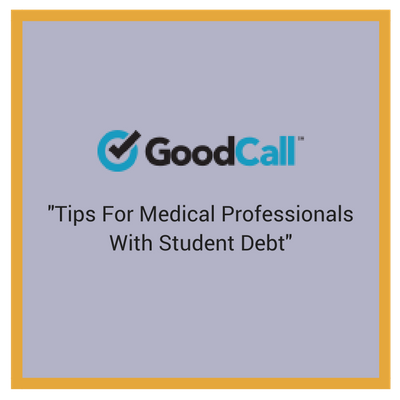SLPs and Student Loans: 6 Advanced Tips for Succeeding With PSLF
/These tips are for the SLPs already submerged, or about to jump in, the deep end of the PSLF pool. If you're unsure about what the qualifying requirements are, or even if you should pursue it, these previous ASHA posts will be your guiding light.
Navigating Student Loan Forgiveness for Audiologists and SLPs
Is Public Service Loan Forgiveness for You?
As important as these tips are, nothing supplants a well thought out repayment strategy addressing your unique needs. If you want a partner in the pursuit of that and your other financial goals we should talk.
1. Do Not Rely On Loan Servicer Representatives
They'll be a consistent part of your life for the remainder of your repayment quest, and that's ok. They can be very helpful! However, it is not uncommon to receive incomplete or wrong information from them, so don't take their words as gospel. At worst, the servicer employing them may actually have some malicious intent. If a conversation with them results in you going "huh", or you have some doubt, call back and speak with a different rep. If you still feel questioning, politely ask for a supervisor.
2. Keep Meticulous Records
Speaking of which, pretend you're a maestor when it comes to keeping records. I try and fill this role for my clients. You might need them when you submit your forgiveness application in year 10! Start a notebook, folder, parchment, whatever tickles you. Keep track of every Employer Verification form you submit; when you sent it and when they acknowledged receiving it. Keep every letter they send listing how many of the 120 payments you have left. Not in their electronic filing cabinet, on your own system. Every time you call the servicer, log the date, time, reps name, and the reason. It may end up a completely unnecessary waste of time, or it may save you thousands of dollars and a heart attack.
3. Complete The Employer Verification Form Every Year
You technically don't have to do this. Some HR departments make it a pain in the ass to get the form signed so many individuals don't. That's a mistake. Submitting it every year accomplishes a couple things:
- It gives you a record of your servicer confirming your employer qualifies and that you're on the right track.
- You have the chance of spotting mistakes earlier in the process. Maybe your servicer mistakenly doesn't realize your employer is a 501c3. Or, you get the letter detailing how many payments you have left and realize it's missing past payments.
- It may alert you that your employer no longer qualifies. This really sucks, but it does occasionally happen. Here's the thing, better to find out in year 3 than in year 10! Now, you can reevaluate and switch jobs if necessary.
4. Submit An Employer Verification Form For Past Employers
The 120 payments needed for forgiveness do not have to be consecutive! If you have an employer in your long and sordid past that would qualify, submit the form. Even if you're unsure that your payments at the time would count, it's worth the effort, each one of those 120 payments could be worth a couple hundred dollars.
5. Use AGI From Previous Years Taxes
When re-upping your income-driven repayment plan every year you have two options: submit a recent paystub or link your previous year's tax return. Unless your income has changed substantially from the previous year it will generally pay to use your AGI. Thanks to our complicated tax code, AGI includes deductions that may not always be reflected in your paystub. Thus, a lower starting point leads to lower monthly payments.
6. Don't Avoid Income
If you have a chance to earn more income, earn it! Yes, it will likely increase your loan payments, but even the least friendly Income-Driven plan only uses 20 percent. That leaves plenty behind for you to enjoy. Get. That. Money.








